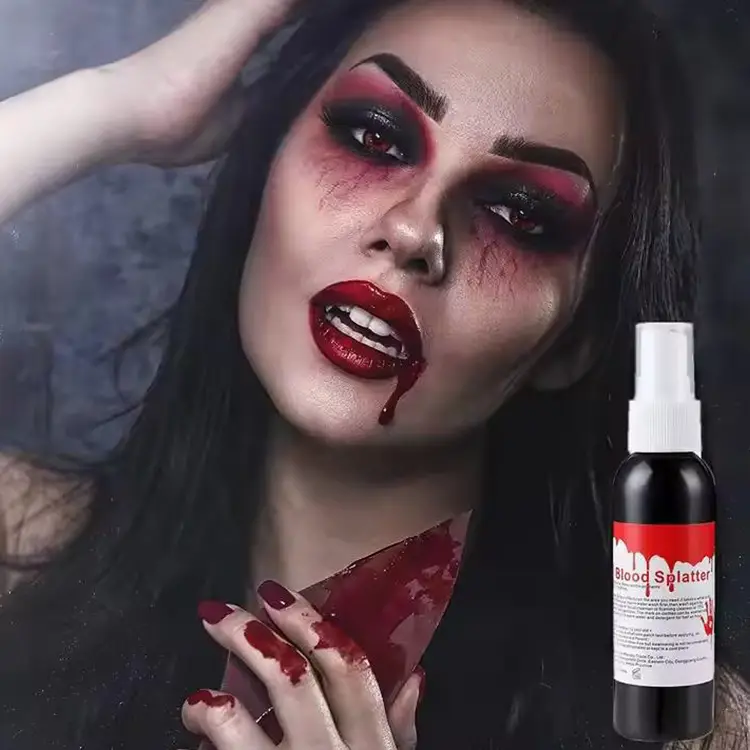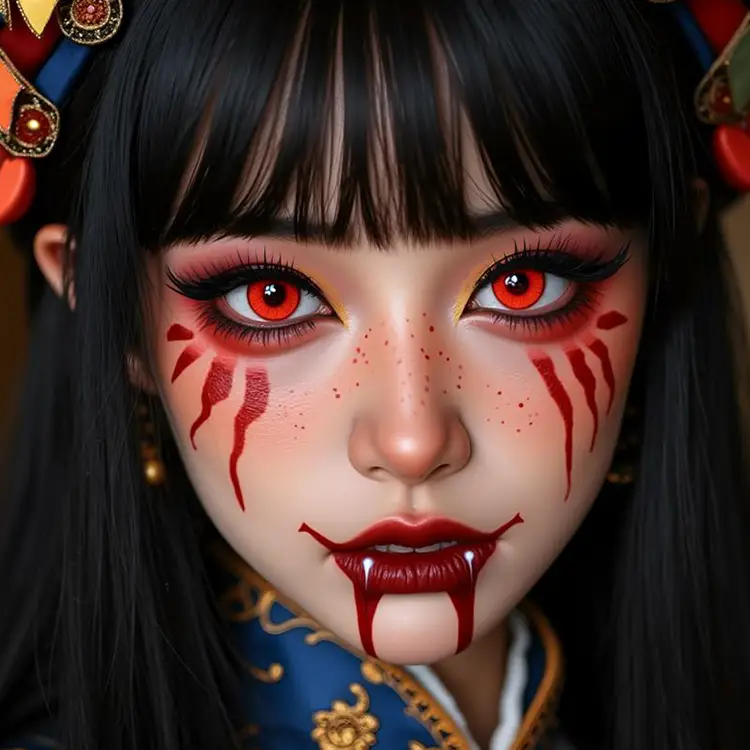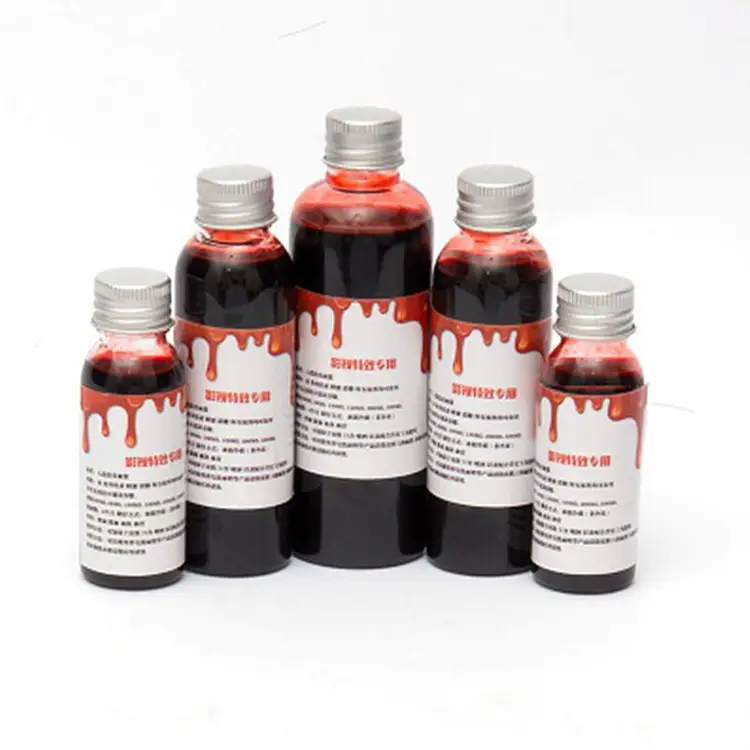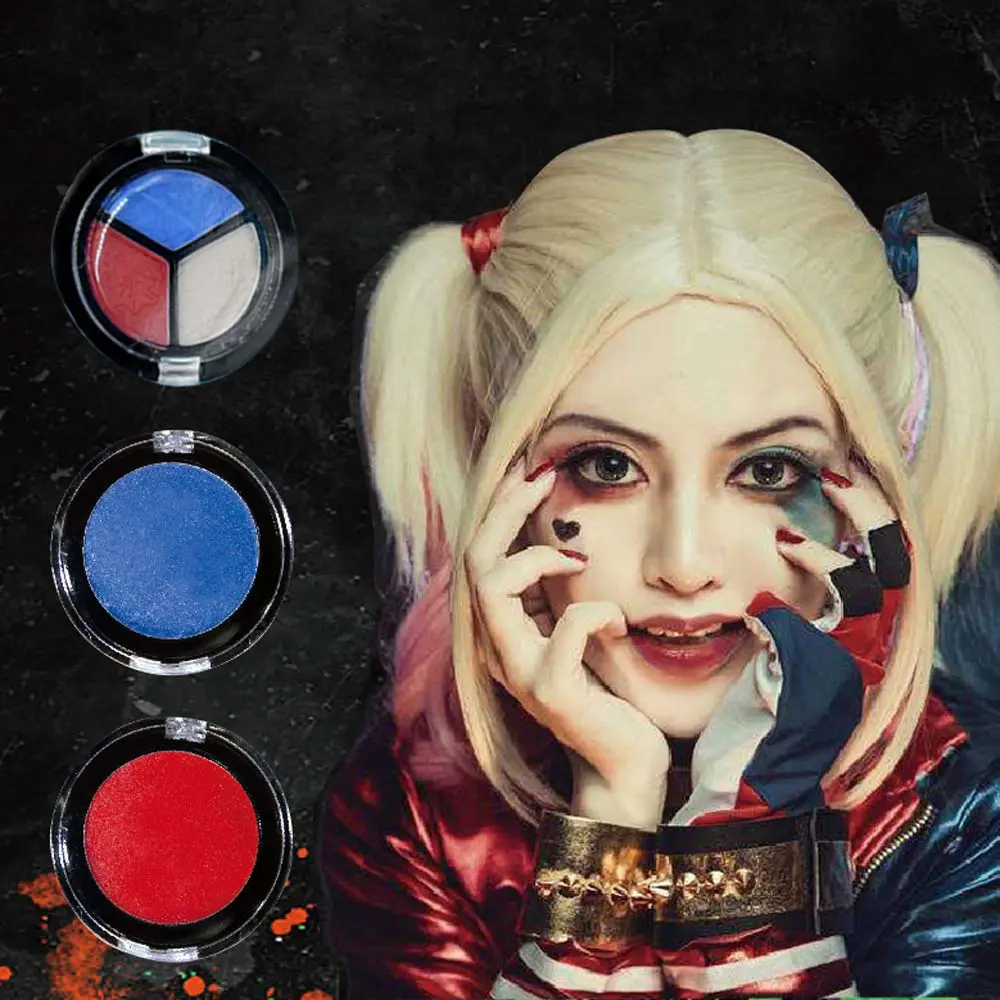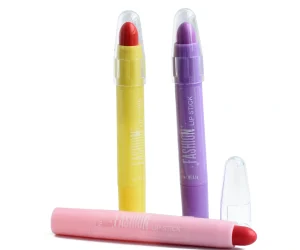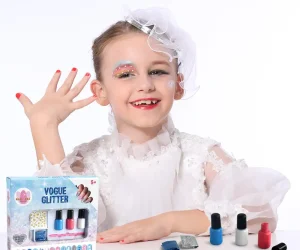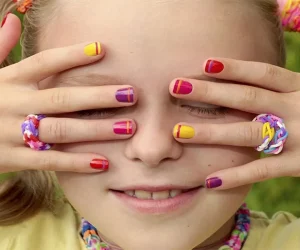Can You Put Fake Blood in Your Mouth for Halloween?
Table of Contents
Halloween fake blood has become one of the most recognizable parts of spooky costumes. People often wonder if this product is safe to use near the mouth. To answer that, it helps to look at why fake blood is so popular and what separates safe, theatrical versions from general stage or costume products.
What Is Fake Blood Made Of?
To know if Halloween fake blood is safe near the mouth, it helps to understand what it is made of. Most products share similar bases, but the exact formula depends on whether the blood is for stage, film, or skin-safe cosmetic use.
Common Ingredients in Standard Fake Blood
Most Halloween fake blood contains water as the main base, combined with coloring agents like food dyes or synthetic pigments. Some also include corn syrup or glycerin to create thickness and a glossy, wet look. These ingredients help the blood drip slowly, making it appear more realistic.
In less expensive formulas, stabilizers and preservatives may be added to stop the mixture from spoiling. While these chemicals are fine on the skin, they are not always approved for contact with the mouth. This is why regular Halloween fake blood may leave a bitter taste or even cause irritation if misused.
Special Effects Formulas vs. Cosmetic-Grade Products
Special effects formulas, often used in movies or haunted houses, are designed to look hyper-realistic under bright lights or cameras. They may include stronger dyes, waxes, or even detergents to clean easily after filming. However, these are not intended to be swallowed or used around the lips.
Cosmetic-grade fake blood is different. These products are tested more carefully, often following cosmetic or food-safe guidelines. They use gentler ingredients and avoid harsh chemicals. This makes them safer for short contact with the mouth, though they still should not be eaten in large amounts.
Can You Put Fake Blood in Your Mouth for Halloween?
Halloween fake blood can make costumes more dramatic, but using it near the mouth raises questions about safety. To decide if it’s okay, you need to look at both health risks and what regulators like the FDA say about cosmetic products that might touch sensitive areas.
Understanding Safety Concerns and Health Risks
Most standard Halloween fake blood is not made for eating. It may contain dyes, stabilizers, or preservatives that are safe on skin but can cause problems if swallowed. Small accidental contact might only lead to a bad taste, but larger amounts could cause stomach upset or irritation in the throat.
Another concern is allergic reaction. Some people may be sensitive to artificial colors or thickening agents like glycerin. On the lips, these reactions can show up quickly as redness, itching, or swelling. This is why dermatologists recommend checking labels and testing on a small skin patch before use.
FDA Guidelines on Cosmetic Products Used Near the Mouth
In the U.S., the Food and Drug Administration (FDA) regulates cosmetics under the Federal Food, Drug, and Cosmetic Act. Products designed for use near the lips must follow stricter rules than products meant only for the skin. This includes limits on what color additives can be used.
Halloween fake blood that is not labeled as “cosmetic-grade” often skips these checks. It may be sold as a novelty item instead of a cosmetic, which means it is not held to the same safety standards. For this reason, only products clearly tested for oral use should be applied near or inside the mouth.
Toxic vs. Non-Toxic Fake Blood Explained
Labels on Halloween fake blood can be confusing. Some say “non-toxic,” but that doesn’t always mean it’s safe to swallow. To understand what’s really safe, it helps to know how cosmetic rules define “non-toxic” and why non-cosmetic products may still cause risks inside the mouth.
What “Non-Toxic” Really Means in Cosmetics
When a cosmetic is labeled non-toxic, it usually means it won’t cause harm under normal use, like on the skin. The FDA allows certain ingredients in lipsticks and glosses, but those same rules don’t apply to novelty makeup. So “non-toxic” doesn’t equal “edible.”
For example, fake blood made with food-safe dyes might not be dangerous in small amounts, but preservatives or thickeners can still upset the stomach if swallowed. The phrase “non-toxic” is more about skin contact than safe digestion.
Risks of Using Non-Cosmetic-Grade Fake Blood in the Mouth
Non-cosmetic Halloween fake blood often falls into the category of theater props or novelty items. These products might contain industrial dyes or chemicals not approved for use near lips. Ingesting them could lead to nausea, staining of teeth, or even allergic reactions.
There is also the risk of kids copying adults. If children see fake blood being used in the mouth, they may assume it’s safe to taste or play with. That’s why pediatricians often warn parents to only use cosmetic-grade items near sensitive areas like the mouth.
Potential Side Effects of Putting Fake Blood in the Mouth
Even when labeled non-toxic, Halloween fake blood is not designed to be swallowed. Putting it in the mouth can trigger reactions that range from temporary irritation to more lasting health problems. The risk depends on the product type, the ingredients, and how much is ingested.
Short-Term Reactions: Irritation, Staining, Upset Stomach
The most common issues are mouth or throat irritation. Some dyes or thickeners can cause a burning or tingling feeling on the tongue and gums. The red pigment also tends to stain teeth and lips, making removal difficult after Halloween night.
Another short-term effect is stomach upset. Even small amounts of artificial coloring, preservatives, or oils may lead to nausea or mild diarrhea. Kids are more sensitive than adults, so these problems often appear more quickly in younger users.
Long-Term Risks: Allergic Reactions or Infections
Repeated use of non-mouth-safe fake blood can trigger allergic reactions. For example, parabens or certain synthetic dyes may cause rashes, swelling, or breathing problems in sensitive people. These reactions may not show up immediately but build over time.
There is also a chance of infection if fake blood is left in the mouth for too long. Bacteria can grow when sticky products stay on teeth and gums, raising the risk of cavities or gum irritation. This makes it especially unsafe for children who may not brush right after use.
Age Considerations: Adults vs. Children Using Fake Blood
Age plays a key role in how safe or unsafe fake blood can be. Children, teens, and adults all face different levels of risk when using Halloween fake blood in or around the mouth.
Safety for Children in Halloween Makeup
Children often copy what they see in movies or on TV. They may think swallowing fake blood is part of the fun, but their bodies are more sensitive to dyes and preservatives. Even tiny amounts can upset a child’s stomach or irritate the skin around the mouth.
Parents should also note that children may not follow hygiene steps, like washing their face after a party. Leaving fake blood on too long can increase the chance of irritation or staining. For kids, it is best to keep fake blood away from the lips and teeth.
Special Notes for Teens and Young Adults
Teens and young adults may be more careful than kids, but they still face risks. Many Halloween parties involve hours of makeup wear, and long exposure to pigments and thickeners around the mouth can lead to dryness or allergic reactions.
Another concern is peer influence. Teens may want realistic effects for photos or social media, and this can tempt them to put fake blood inside the mouth. While small contact might not cause harm, repeated or large use should always be avoided unless the product is clearly labeled as mouth-safe.
Alternatives to Mouth-Safe Fake Blood for Halloween Effects
Not all fake blood is safe to use near the lips or inside the mouth. However, there are cosmetic-grade and creative options that provide the same spooky look without the health risks.
Cosmetic-Grade Options Designed for Oral Contact
Some fake blood is made under cosmetic rules, often tested for use near sensitive areas like lips. These formulas avoid harsh chemicals and stick to food-safe dyes and thickeners. They may not taste pleasant, but they are less likely to cause irritation.
Still, “mouth-safe” does not mean risk-free. Swallowing large amounts can upset digestion. Always check labels for terms like “cosmetic grade” or “FDA-compliant for oral use,” and follow usage instructions closely.
Creative Substitutes That Avoid Health Risks
For costumes or stage plays, many performers turn to safe tricks. Red-tinted mouth rinses or edible gels can mimic blood without exposing the body to unsafe ingredients. They also rinse out more easily than heavy makeup.
Another method is to use props. A fake fang with a painted tip or a small blood capsule placed in the mouth during a scene can achieve the same chilling effect without constant contact. These tricks keep the performance realistic while avoiding chemical risks.
Best Practices for Safe Halloween Makeup Use
Halloween makeup, including fake blood, can be fun but requires caution. Understanding labels, applying correctly, and cleaning properly help reduce health risks while still achieving dramatic effects.
How to Check Labels and Safety Warnings
Before buying fake blood, read the label carefully. Look for words like “cosmetic-grade,” “food-safe,” or “mouth-safe.” Check ingredients for dyes, preservatives, and stabilizers. Avoid products that list industrial chemicals or lack safety information.
Always follow warnings about age restrictions and recommended use. Even products labeled non-toxic may not be suitable for ingestion, especially for children. When in doubt, consult the manufacturer’s safety information.
Application and Removal Tips to Minimize Risk
Apply fake blood sparingly and avoid prolonged contact with lips or inside the mouth. Use a brush or sponge rather than fingers to reduce accidental ingestion.
After Halloween, remove all makeup immediately using mild soap and water or a gentle cleanser. Make sure children rinse thoroughly to prevent skin irritation, staining, or accidental swallowing of leftover residue. Proper hygiene ensures a safe and enjoyable experience.
Medical Insights on Ingesting Fake Blood
Doctors emphasize caution when using Halloween fake blood, especially near the mouth. Understanding the risks and knowing when to seek help can prevent minor incidents from becoming serious health issues.
What Doctors Say About Accidental Ingestion
Medical professionals note that small accidental ingestion of cosmetic-grade fake blood is usually not dangerous. The main risks include mild stomach upset, temporary irritation, or minor allergic reactions, depending on the product’s ingredients.
However, ingestion of standard or non-cosmetic-grade fake blood may expose the body to synthetic dyes, preservatives, or other chemicals. Doctors advise limiting exposure and keeping children from tasting or playing with these products.
When to Seek Medical Help After Exposure
Seek medical attention if any of the following occur: persistent vomiting, severe allergic reactions, difficulty breathing, or unusual swelling around the mouth or throat. For minor symptoms like mild nausea or temporary irritation, rinsing the mouth and drinking water usually helps.
Parents and caregivers should always store fake blood safely and supervise children during Halloween activities to avoid accidental ingestion. Immediate response can prevent unnecessary complications.
Cultural and Entertainment Perspectives on Fake Blood
Fake blood has a long history in theater, film, and cultural celebrations. Its use illustrates how creative effects can be achieved safely when professionals follow strict guidelines.
How Fake Blood Is Used in Theater and Film Safely
In movies and stage productions, fake blood is carefully formulated for realism while protecting actors. Cosmetic-grade, edible, or water-based formulas are used for scenes involving close contact with the mouth or skin.
Makeup artists and stage crews follow strict application and removal protocols. This ensures that actors can perform safely without risking ingestion, allergic reactions, or skin irritation, even during long shoots or live performances.
Historical Evolution of Stage Blood Formulas
Stage blood has evolved significantly over the centuries. Early versions often included animal blood or natural dyes, which were messy and sometimes unsafe. By the mid-20th century, synthetic and food-based formulas emerged, allowing for safer, more realistic effects.
Today, innovations like water-soluble pigments, thickening agents, and non-toxic dyes provide visually convincing blood while meeting modern safety standards. This evolution has influenced Halloween makeup, showing that dramatic effects can be achieved responsibly.
Conclusion
Halloween fake blood can create exciting effects, but safety should always come first. Only use cosmetic-grade or mouth-safe products near lips, check labels carefully, and supervise children. Avoid ingestion, remove makeup promptly, and follow hygiene practices to enjoy a fun, worry-free Halloween.
FAQ
Yes, most fake blood formulas, especially those with strong dyes, can stain fabrics, carpets, and furniture. Quick cleanup with cold water and mild detergent can reduce staining, but some materials may require professional cleaning. Always test on a small area first.
Fake blood can last from a few hours up to an entire event, depending on its formula and skin type. Water-based and cosmetic-grade products may fade faster, while thicker, glycerin-based blood holds longer. Reapplication may be needed for extended wear.
Not all fake blood is suitable for sensitive skin. Ingredients like synthetic dyes, preservatives, or thickeners can cause irritation, redness, or rashes. It’s recommended to do a patch test on a small skin area before full application, especially for children.
No, standard fake blood is not edible and should never be used in food or drinks. Even cosmetic-grade fake blood is only designed for short contact with lips or skin. Edible alternatives, like red-colored syrups or sauces, are safer for food applications.
Store fake blood in a cool, dry place, tightly sealed to prevent contamination or drying out. Avoid direct sunlight or extreme heat, which can break down dyes or thickeners. Proper storage also reduces bacterial growth and ensures the product remains safe for skin use.

